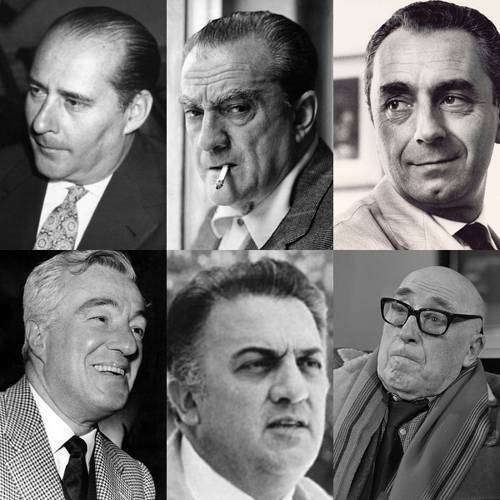
FAQ About The Influence of Italian Neorealism on Documentary Filmmaking

What is Italian Neorealism?
Italian Neorealism is a film movement that emerged in Italy after World War II, characterized by its focus on everyday life, particularly of the working class. It often featured non-professional actors, on-location shooting, and a narrative style that emphasized the mundane and the real over glamorized and dramatized storytelling.

How did Italian Neorealism influence documentary filmmaking?
Italian Neorealism influenced documentary filmmaking by introducing a style that emphasized authenticity and realism. Filmmakers adopted techniques such as on-location shooting and utilizing non-professional actors, which allowed documentaries to present stories that felt more realistic and relatable to audiences.

What are some of the key features of Italian Neorealism?
Some key features of Italian Neorealism include the use of non-professional actors, on-location shooting, a focus on the everyday struggles of ordinary people, and narratives that emphasize the human condition and social issues. The movement sought to present a more honest and raw depiction of life.

Which documentary filmmakers were influenced by Italian Neorealism?
Documentary filmmakers like Vittorio De Seta and Frederick Wiseman were notably influenced by Italian Neorealism. Their work reflects the movement's emphasis on capturing real life and social realities using a style that prioritizes authenticity over dramatization.

What impact did Italian Neorealism have on narrative style in documentaries?
Italian Neorealism's impact on narrative style in documentaries includes a shift towards narratives that explore everyday life and personal stories without embellishment. Documentaries began focusing more on realistic portrayals of social issues and the human condition, borrowing the narrative approach of Neorealism.

How did Italian Neorealism shape the themes explored in documentaries?
The themes explored in documentaries were shaped by Italian Neorealism through its focus on social issues, poverty, working-class struggles, and the human condition. Documentaries began to emphasize these themes, portraying them in a way that is deeply rooted in real-life experiences and societal truths.

Why is location shooting important in both Italian Neorealism and documentaries?
Location shooting is important in both Italian Neorealism and documentaries because it enhances the authenticity and realism of the film. Shooting in real environments helps to create a connection with the audience, providing a truthful depiction of the setting and circumstances of the characters or subjects.

What role did non-professional actors play in Italian Neorealism and documentaries?
Non-professional actors played a crucial role in Italian Neorealism and documentaries as they contributed to the authenticity and relatability of the stories. Their performances often conveyed genuine emotions and perspectives, blurring the line between fiction and reality.

Can you give an example of a film that embodies Italian Neorealism and influenced documentaries?
An example of a film that embodies Italian Neorealism is Vittorio De Sica's "Bicycle Thieves". This film's realist portrayal of everyday life and use of non-professional actors exemplifies the style and has influenced numerous documentary filmmakers in adopting a similar authentic approach.

What technical approaches in Italian Neorealism were adapted by documentary filmmakers?
Documentary filmmakers adapted several technical approaches from Italian Neorealism, including on-location shooting, handheld camera work, and natural lighting. These techniques contributed to a more truthful and immersive viewing experience, aligning with the documentary goal of portraying reality.

Is Italian Neorealism considered a form of documentary?
While Italian Neorealism is not considered a documentary form, it shares similarities in its pursuit of truth and realism. Both aim to depict real life with authenticity, but Neorealism is a narrative film movement that often includes fictional stories, whereas documentaries focus on factual storytelling.

How do Italian Neorealist films differ from traditional documentaries?
Italian Neorealist films differ from traditional documentaries in that they often contain fictional narratives, albeit ones that are deeply influenced by real-life events and social issues. Documentaries are factual and focus on non-fictional storytelling, though they may employ similar techniques to achieve realism.

What is the historical significance of Italian Neorealism in cinema?
Italian Neorealism holds historical significance in cinema for its groundbreaking approach to storytelling that broke away from the studio-based, all-encompassing dramas. It paved the way for new forms of realistic cinema and influenced generations of filmmakers, including those in the documentary field.

Did Italian Neorealism have any impact beyond filmmaking?
Yes, Italian Neorealism extended its impact beyond filmmaking into cultural and social spheres. By focusing on social issues and the human condition, it raised awareness and stirred discussions around the world about the realities faced by the working class and other social themes.

Why did Italian Neorealism emerge after World War II?
Italian Neorealism emerged after World War II as a response to the socio-economic difficulties faced by Italy. It intended to reflect the harsh realities and devastation caused by the war, moving away from escapist cinema toward a more truthful depiction of society and real-life hardships.

How did Italian Neorealism influence modern filmmaking outside documentaries?
Italian Neorealism influenced modern filmmaking by encouraging a movement towards realism in storytelling, inspiring filmmakers worldwide to create films that are character-driven, set in real locations, and focus on ordinary people's lives. Its ethos can be seen in various international cinema movements, including the French New Wave.

What elements of Italian Neorealism were resisted by mainstream cinema?
Mainstream cinema often resisted the unpolished and raw aesthetic of Italian Neorealism, especially the use of non-professional actors and the absence of conventional glamour. The industry favored heavily scripted, visually polished films, which often contrasted with the Neorealist approach.

Are there any notable documentaries that reflect Italian Neorealism's influence?
Notable documentaries reflecting Italian Neorealism's influence include "Chronicle of a Summer" by Jean Rouch and Edgar Morin. This documentary employs real-life interviews and everyday conversations, resonating with the realist style of Neorealism by blurring the line between filmmaker and subject.

What philosophical ideals underpin Italian Neorealism that also resonate in documentaries?
Philosophical ideals underpinning Italian Neorealism include the pursuit of truth, emotional honesty, and social consciousness. These are echoed in documentaries, which strive to inform and provoke thought about real-world issues and human experiences, fostering a deeper understanding and empathy within audiences.
